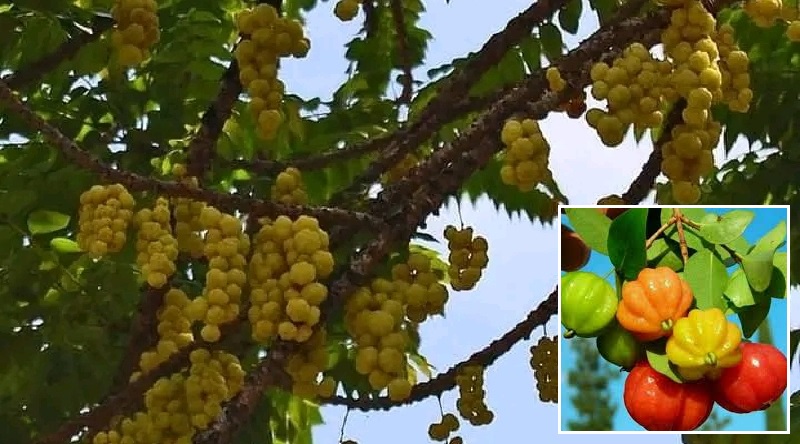Latin Name: Phyllanthus acidus
Plant Origin and Preferred Growing Habitat:
Ceremai Merah, commonly known as the red version of the Otaheite gooseberry, is native to tropical regions in Southeast Asia and India. It thrives in warm, humid climates and is often found in home gardens, rural landscapes, and as a roadside tree. It prefers well-drained soils and can tolerate some drought but grows best with adequate water and sunlight.
General Appearance:
The Ceremai Merah tree is small to medium-sized, reaching heights of 2–9 meters. It has a bushy crown with spreading branches. The leaves are light green, ovate, and arranged alternately. The red fruits are small, round, and slightly ribbed, hanging in clusters. They are tangy and sour when ripe, with a shiny, translucent appearance.

Benefits as a Herb:
Ceremai Merah is valued in traditional medicine for its wide-ranging health benefits:
- Digestive Health: Helps relieve constipation and acts as a natural laxative.
- Detoxification: Assists in removing toxins from the body, supporting liver health.
- Anti-inflammatory Properties: Reduces inflammation, soothing joint pain and swelling.
- Rich in Antioxidants: Contains vitamins C and A, which combat free radicals and support overall immunity.
- Respiratory Health: Used to alleviate coughs, colds, and sore throats.
- Skin Benefits: Helps in treating acne, blemishes, and promoting healthy skin.
How to Process Ceremai Merah for Consumption as Medicine:
- Ceremai Tea for Detoxification:
- Wash and crush a handful of fresh Ceremai Merah fruits.
- Boil them in 2–3 cups of water for 10–15 minutes.
- Strain and sweeten with honey if desired. Drink warm.
- Infused Syrup for Cough Relief:
- Extract the juice from the fruit by boiling them with sugar and water until the mixture thickens into syrup.
- Take 1–2 teaspoons as needed for soothing coughs and sore throats.
- Fermented Ceremai for Digestion:
- Wash and dry the fruits, then mix them with salt or sugar and leave them to ferment for a few days.
- Consume a small amount daily to support digestion.
- Poultice for Skin Issues:
- Crush fresh fruits and mix with a little turmeric or aloe vera gel.
- Apply directly to the skin to treat acne or reduce inflammation.
- General Culinary Use:
- Make jams, pickles, or candied Ceremai to combine its medicinal benefits with culinary enjoyment.
Precautions:
Due to its sour nature, excessive consumption can irritate the stomach or teeth. People with ulcers or sensitive digestion should consume Ceremai Merah in moderation. Always consult a healthcare professional before using it for medicinal purposes.

Leave a Reply